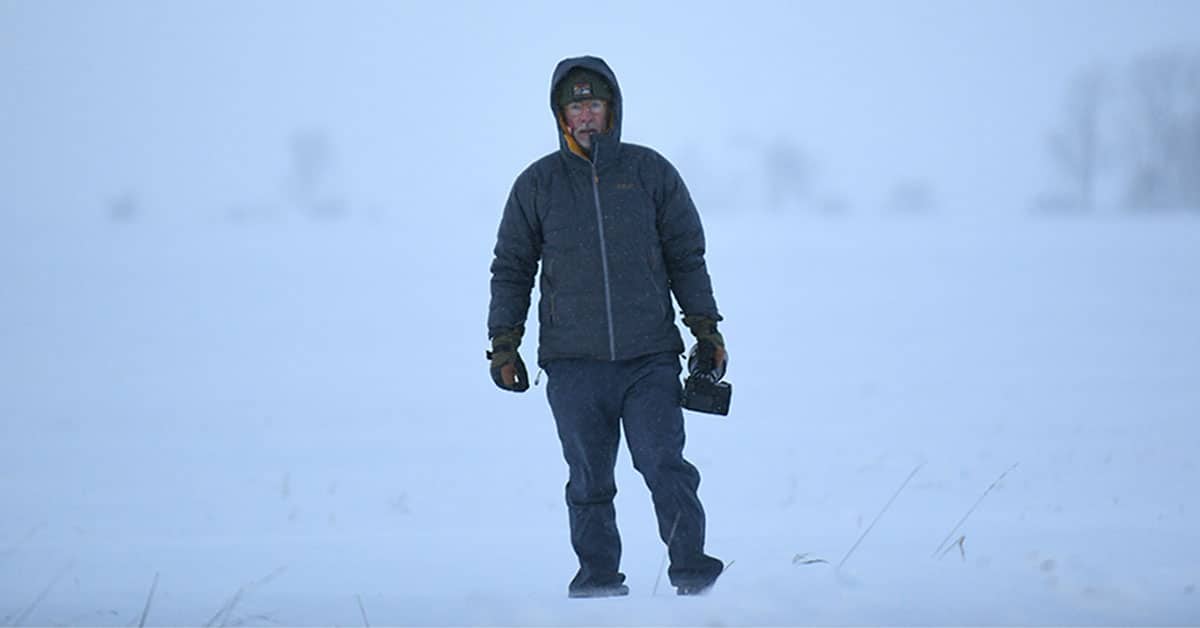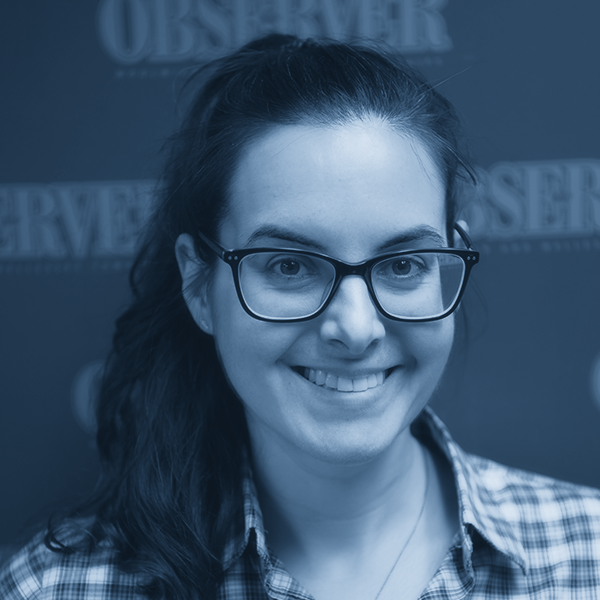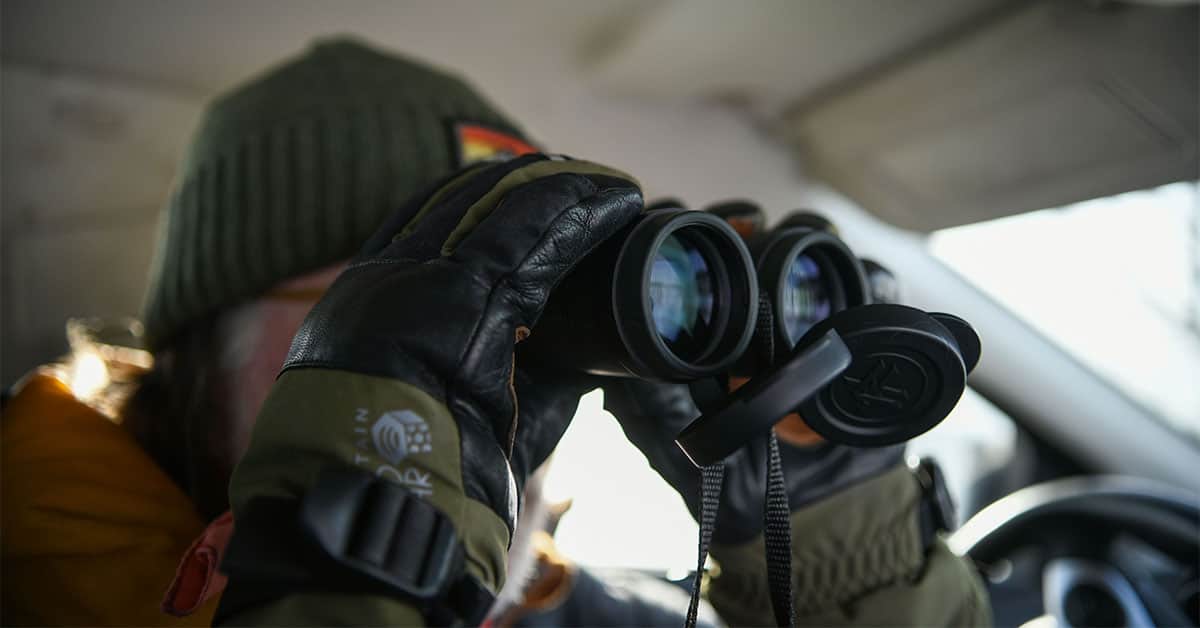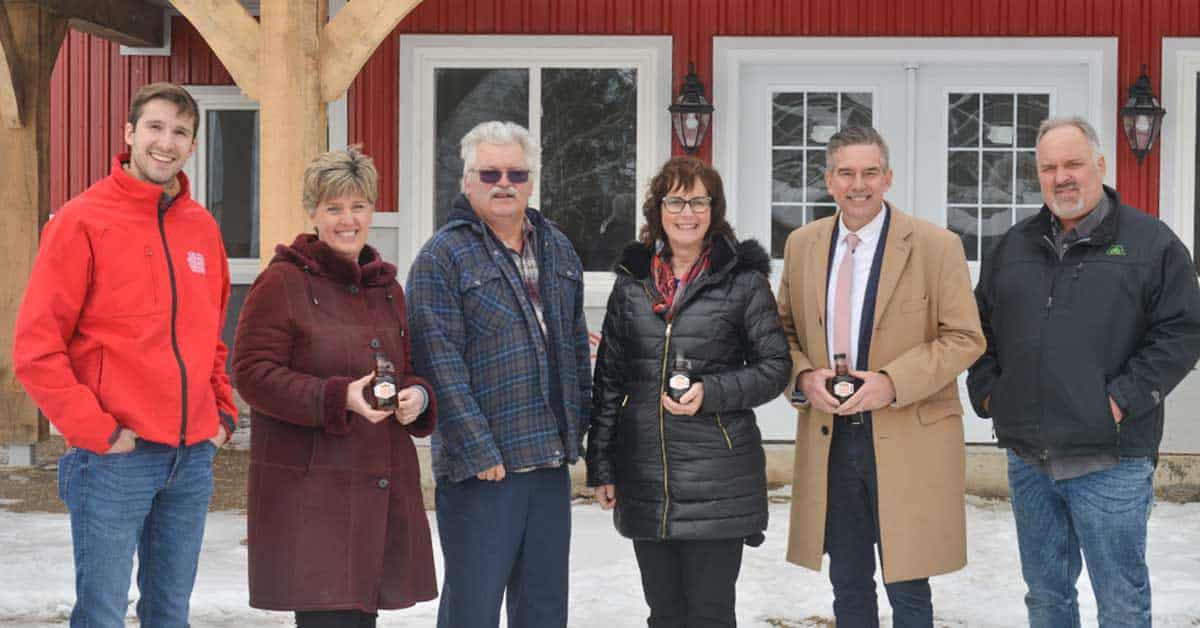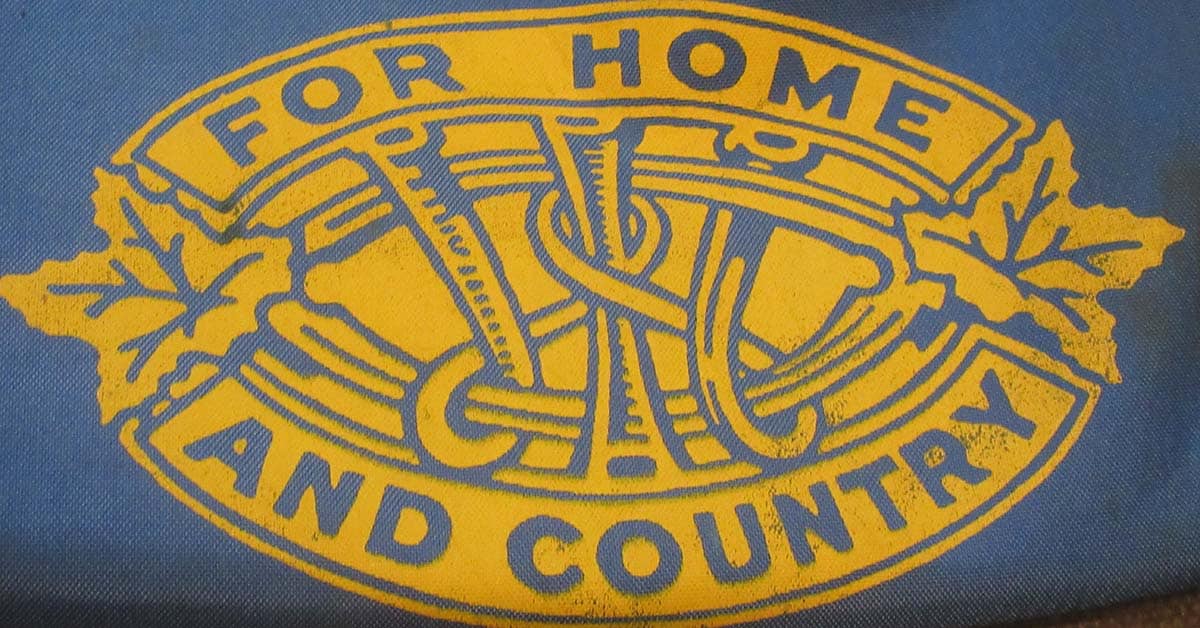In temperatures minus-19 degrees Celsius, Paul Gains drives the back roads west of Elmira with the windows down and the heat off.
He’s looking for snowy owls. He says the kids around here call him the Owl Guy.
He’s been making the journey to these fields from his Cambridge home for the last ten years. He drives the same back roads over and over again, up and down, up and down, for hours at a time.
So why keep doing this?
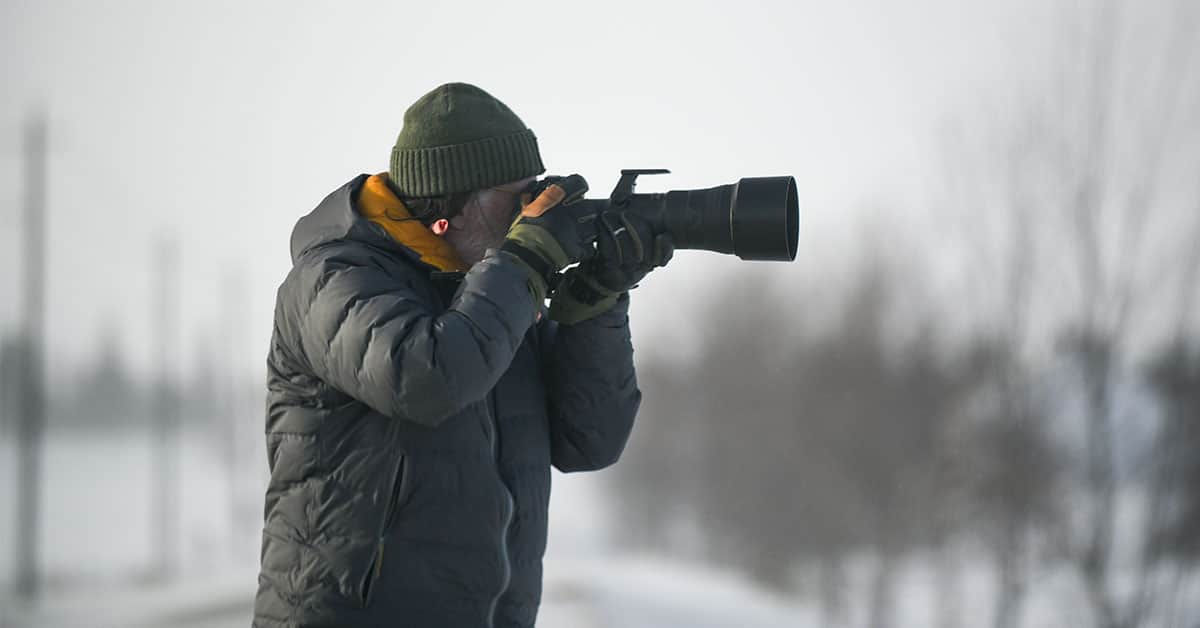
“Because nobody has certified me as insane yet,” he says with a laugh. “I love being outdoors, this is an excuse to enjoy winter for one thing, but you know I always say that I’ve photographed grizzlies in Alaska, I’ve photographed pumas in Patagonia, jaguars in Brazil, but I’ve had more experience with snowy owls than any other species. This is 10 years now of coming up to the same fields and looking for owls, and you know I’ve sort of learned a lot about them.”
“They’re one of the most beautiful species I’ve
ever seen.”
He tries to make the journey four or five times each week in the winter months when the owls are visiting from the Arctic. They’ll be here for a few more weeks before they fly back to the Arctic tundra to mate and raise their young.
His snowy owl photos are featured in Canadian Geographic Magazine and the Toronto Star. He gives presentations that reach people across North America about his photography through libraries and naturalist clubs and writes about them on his website. After ten years studying the birds for hours every day, he’s gotten to know them and enjoys passing on his knowledge.
Gains says the first time he saw a snowy owl was in 2013 when he was first interested in wildlife photography. “Somebody had told me ‘oh, there’s [snowy owls nearby]’ and I had started getting into wildlife photography,” he said.
“So I went up there and I found this owl sitting in a tree on my first afternoon. And I was sort of awestruck because it’s so beautiful.” Later that day, he says he ran into another female, who screamed at him.
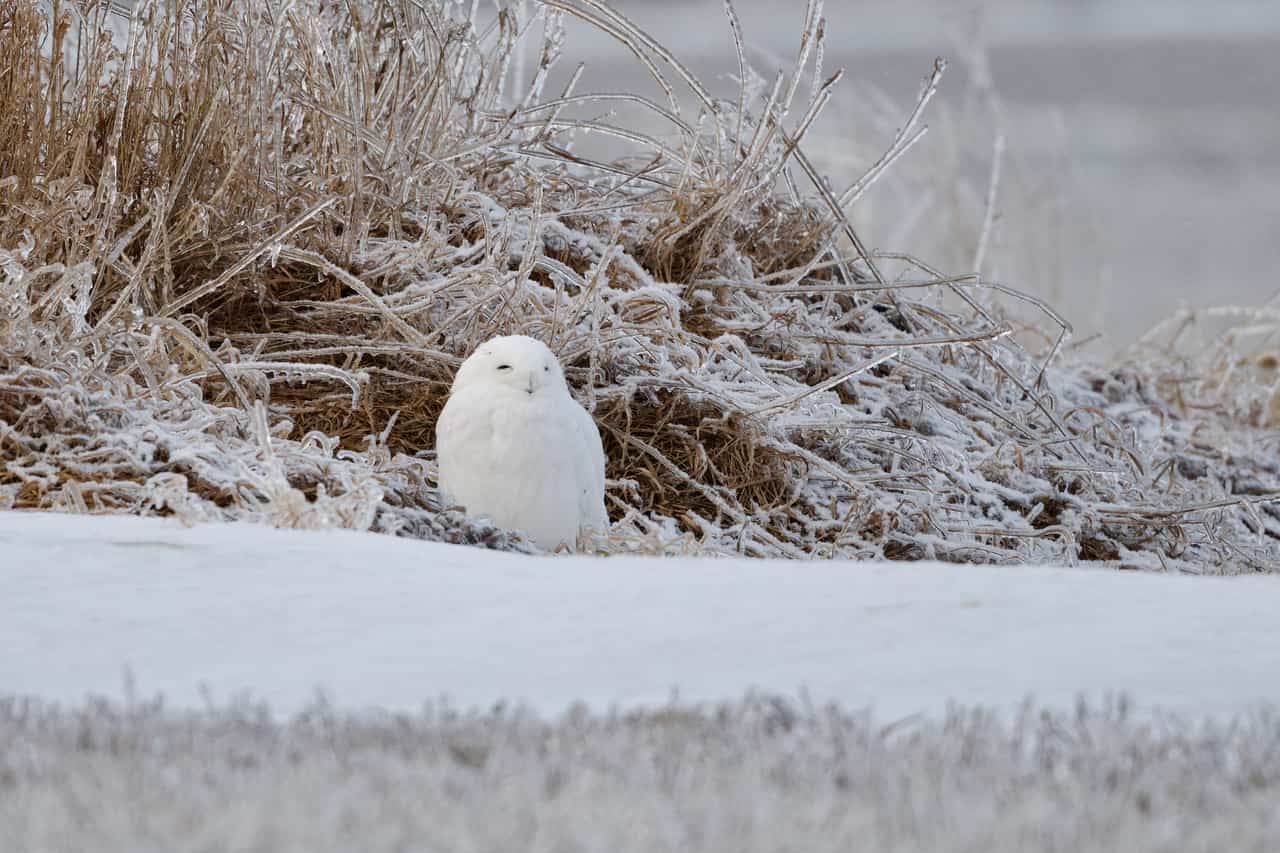
Photo by Paul Gains
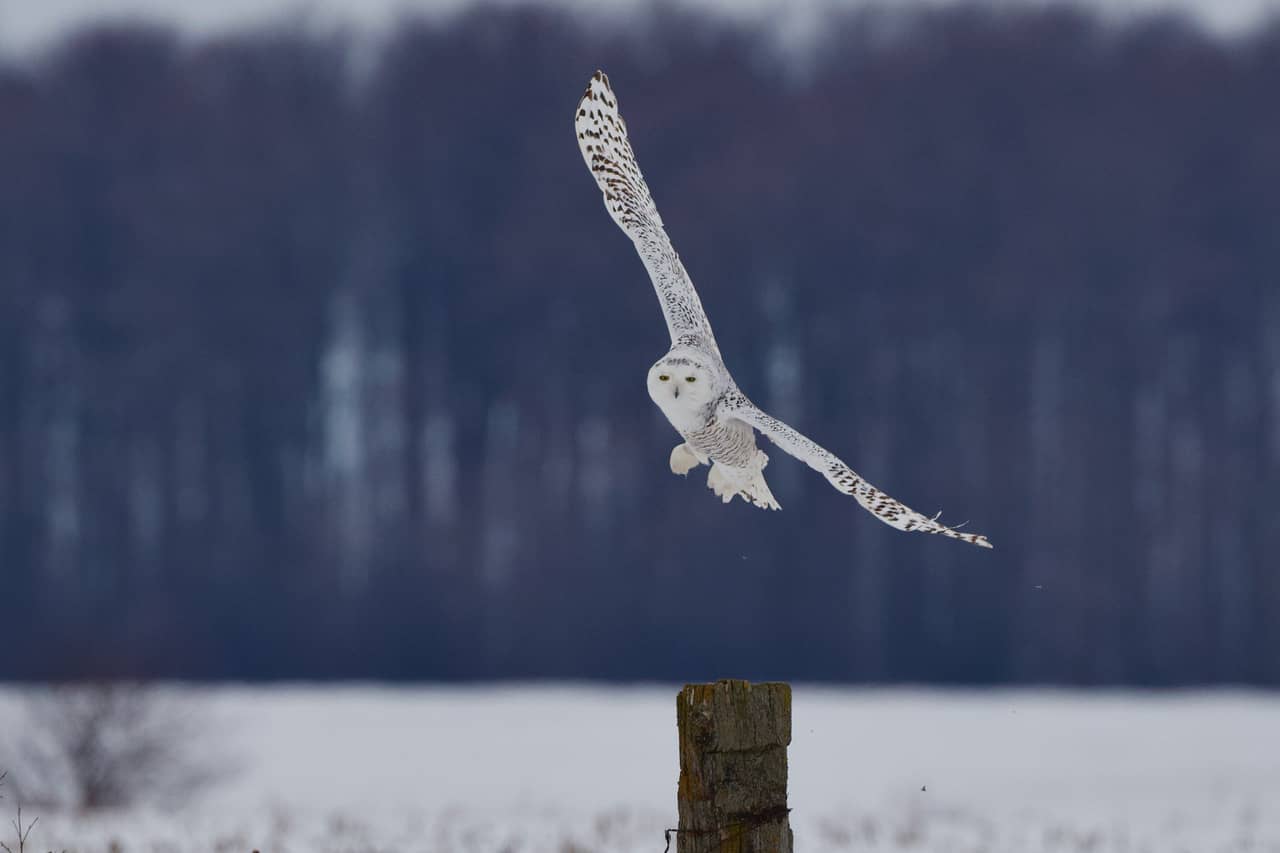
Photo by Paul Gains
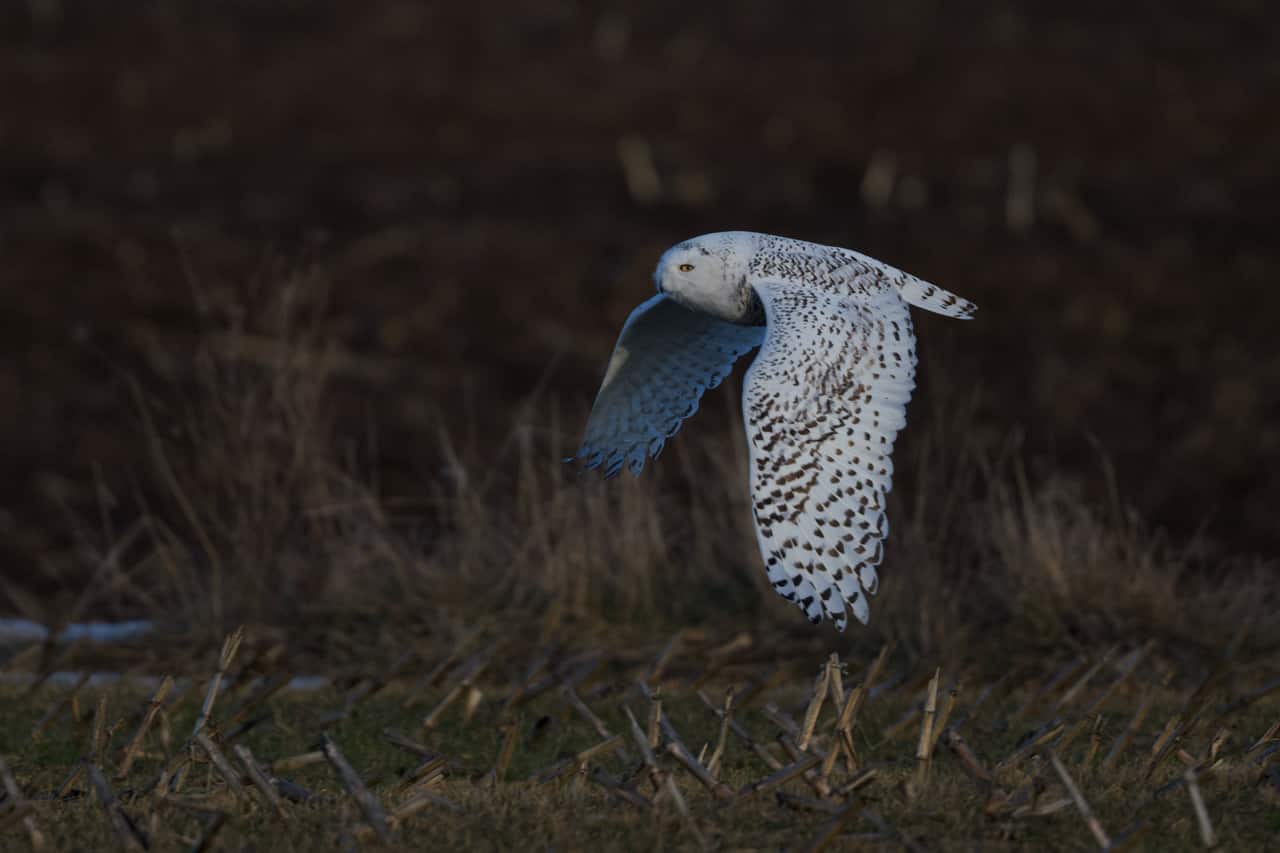
Photo by Paul Gains
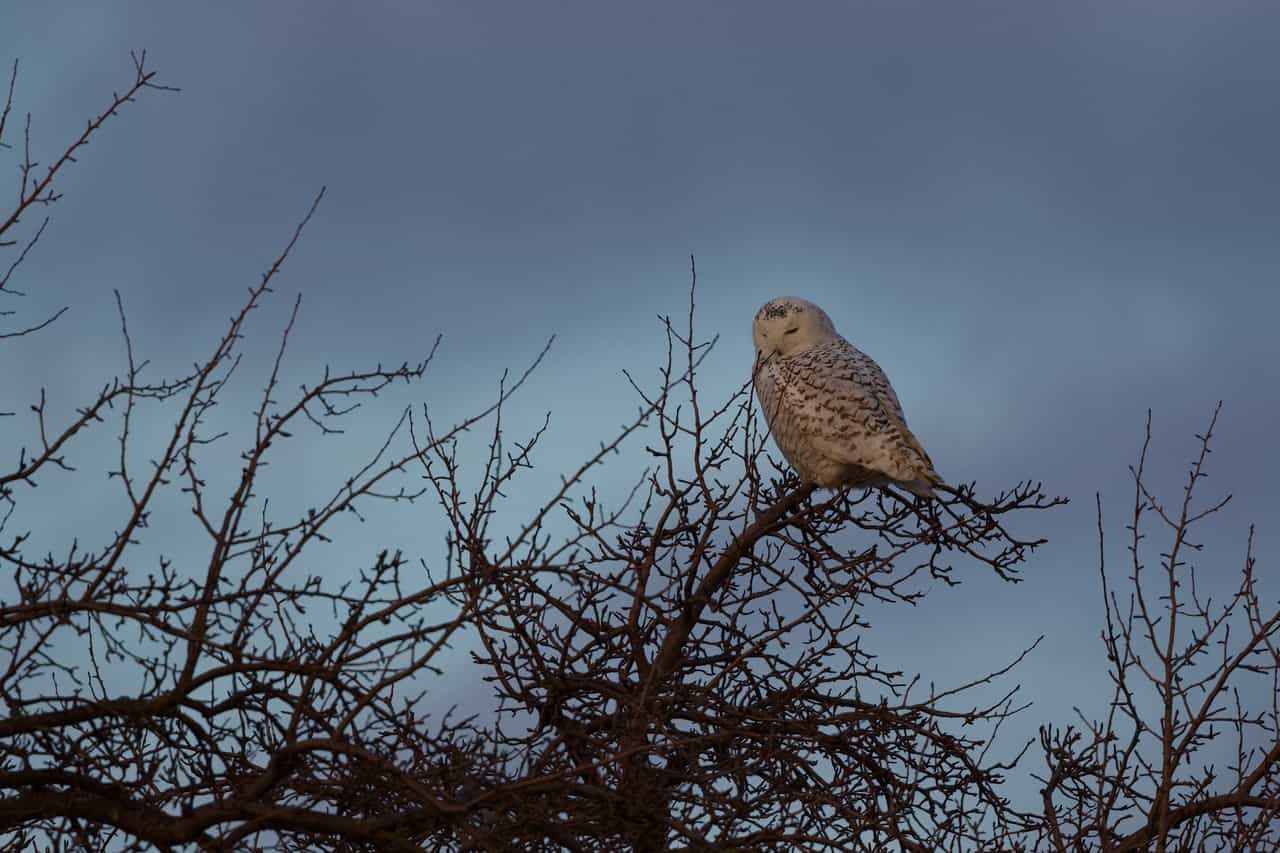
Photo by Paul Gains
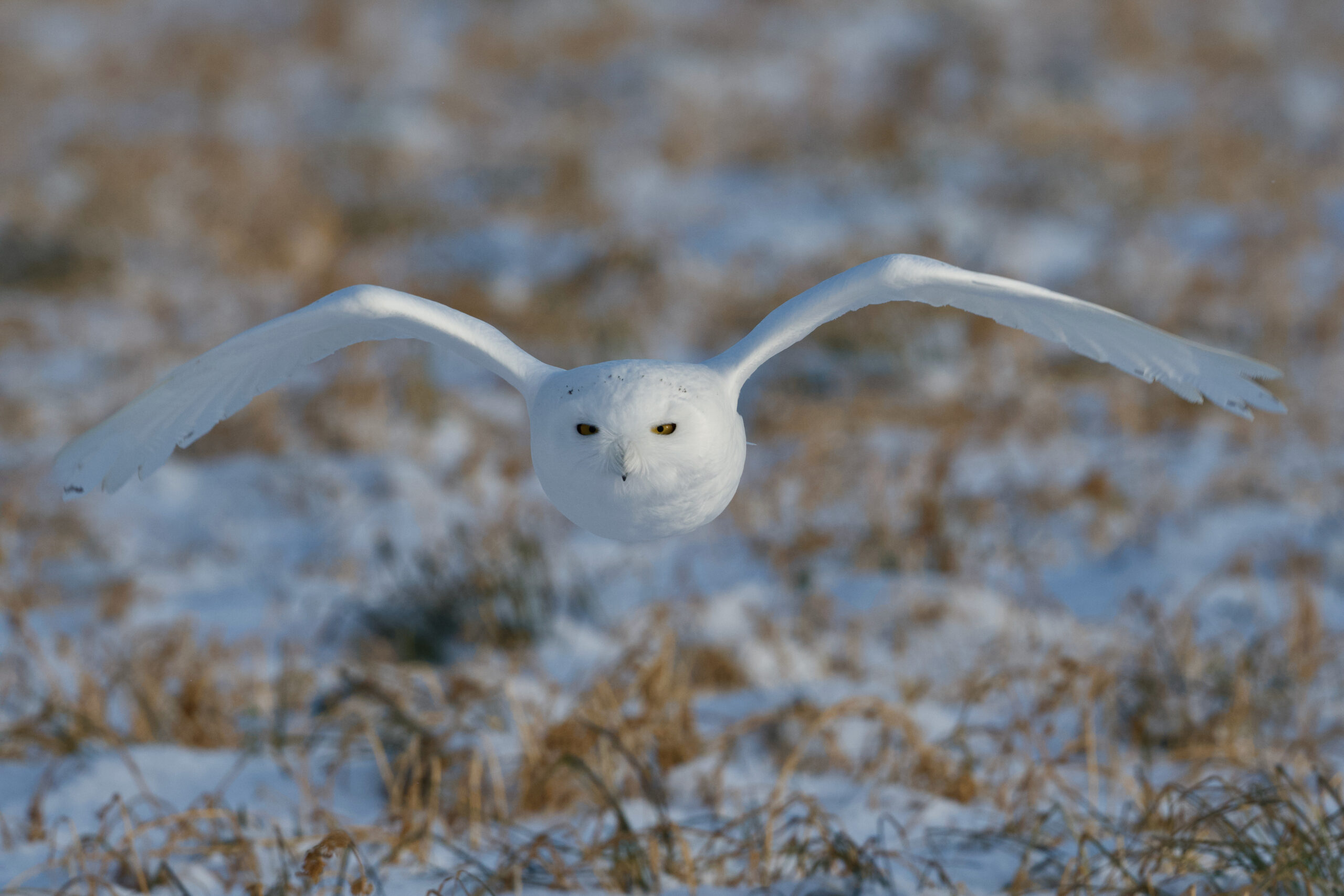
Photo by PauPhoto by Paul Gainsl Gains
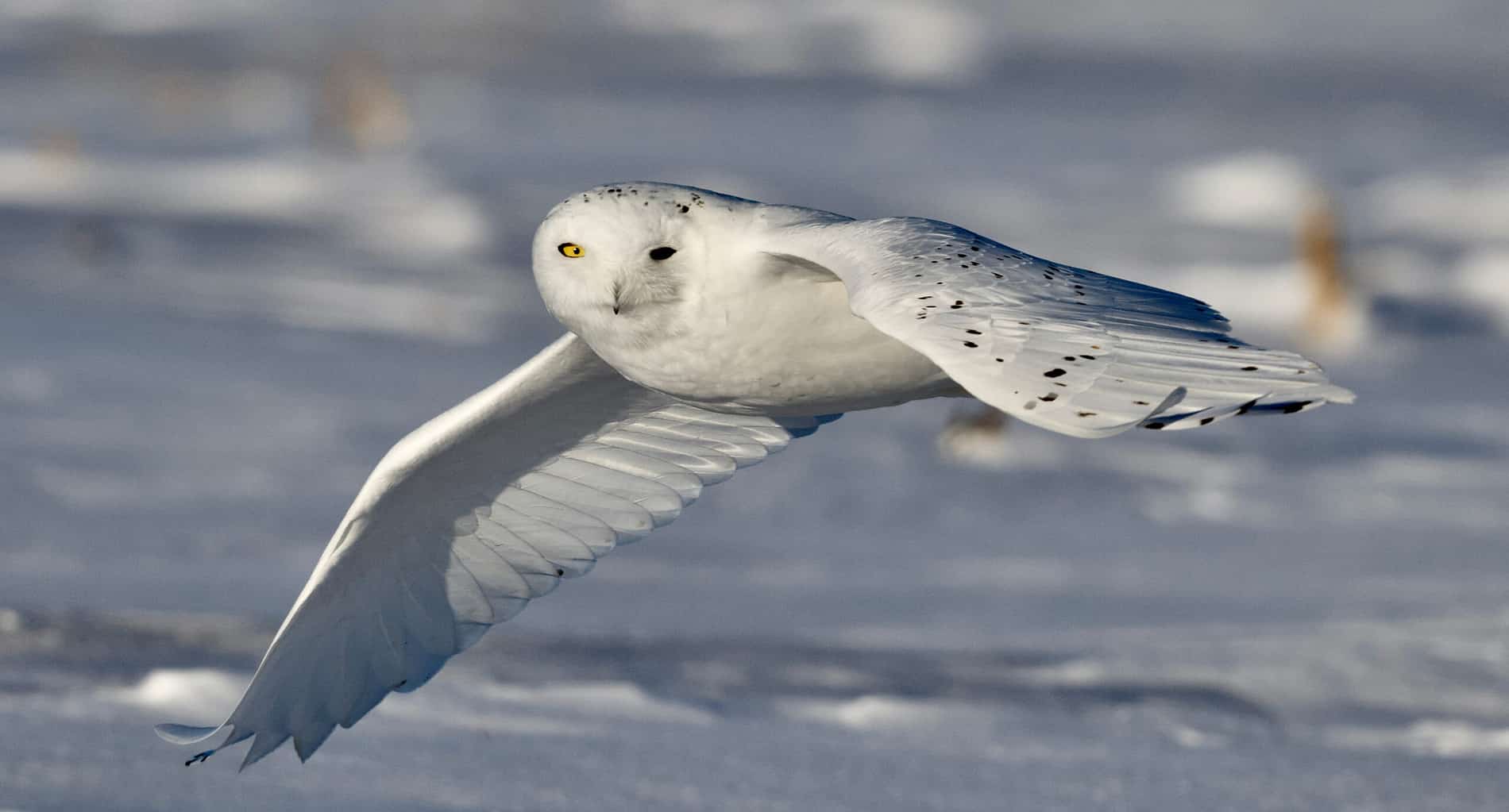
Photo by Paul Gains
“She was on the ground. I was standing at the side of the road. I didn’t go into the field or anything, I didn’t know the farmers, I didn’t think I’d be taking any more pictures. And I stood there at the side of the road and she flew from the ground to a fencepost and then she screamed again and she flew right at me and then only changed direction at the last minute. So she scared the heck out of me. I thought she was going to attack me.”
When Gains goes looking for owls, he leaves his Cambridge home around 1:30 or 2 p.m., fills his car at the Esso gas station in Elmira where the staff wish him luck, and then makes his way to the fields where he drives around scouting to see what the owls are up to, and where they are located.
As he drives, he holds the steering wheel in one hand, and the other is ready to use his binoculars. His trusty Nikon with a huge 500mm lens takes up his entire lap. He keeps the heat off to avoid the damaging condensation that can form inside camera equipment when moved from very cold to warm conditions quickly.
Waiting around for owls in the winter is cold. On this day, with the wind-chill factor, it feels like minus-22 degrees Celsius. Gains says he likes going when it’s so cold, because it means fewer other photographers to compete with, but he has to dress for the occasion. Along with his down jacket, he’s wearing a hat, buff, weatherproof pants and boots. On his hands, he wears specialized gloves that allow him to use his camera’s touchscreen in the freezing temperatures. But even with the expensive gloves, on days like today, his fingers still get cold.
He can recognize individual owls, and knows their schedules and their favourite spots. The owls will usually be seen on the top of grain silos, at the tops of trees, on hydro lines, or roosting lumps of white in the middle of the white fields.
From his car, he can pick out the snowies sitting hunched far away in the middle of a field, without binoculars.
“You get used to looking for irregular bumps,” he said. “I hear people say, ‘oh, snowy owls are hard to photograph because it’s white on white,’ but they are a different colour to the snow. And you look for this irregular sharp shape. And you also learn where you should be looking. Like, what time of day it is, where’s the wind coming from? And you know, this is Jim’s farm. And he used to every year have one that would sit in a tree here every year and would hunt in his field. Often they were in that tree over there. And there was one that would roost on the ground there. And I’d drive by and go, ‘oop, there she is.’”
As he drives, Gains is always looking. Looking for the owls, but also the tractors, delivery vans, industrial vehicles, cars and trucks that suddenly appear in the rearview racing toward his Ford Focus. He often has to interrupt his scouting to pull over further, or move over somewhere safer, and tells about times he’s had encounters with drivers angry with him for taking up space, for the sake of a photo.
That said, more people are out looking to take photos of the owls these days, he notes. As far as photographing etiquette goes, he says there are a few rules to follow. He considers baiting owls – that is, using food to lure the owl toward you for a photo – to be cheating and dangerous to the birds. The practice teaches owls to expect food from humans. “It’s artificial, it’s cheating and it teaches the owl to see a human as a food source.”
He says ethical wildlife photography comes down to, “understanding that the welfare of the bird is more important than a picture and that comes with spending a lot of time with them.”
Farmers and landowners also don’t appreciate strangers walking all over their properties. Gains says he has painstakingly cultivated relationships with landowners in the area over the last decade, and he dutifully stays within the boundaries where he has permission. As he cruises past the fields and barns, he talks about the families who live there. He regularly challenges other photographers he finds to ask if they have permission to be where they are.
“My objective is not to see how many owls I can catch. It’s to get to know individual owls, because then when you find that they’ll come and hunt right in front of you, and do things like that where they’ve sort of accepted you, it’s a huge thrill, and you get some nice images.”
For this, he needs to put in the hours consistently so the owls recognize him and feel comfortable.
He waits to start taking his photos, because even if he sees the owls earlier, he knows they don’t start getting active and hunting until later in the afternoon. He doesn’t like to disturb them before they begin moving on their own.
He gets to see them living their lives, doing activities like hunting, eating, coughing up their pellets and preening.
“I know a lot of photographers don’t take the time. I see a lot of photographers come out and they’ll see an owl on a hydro pole and they’ll walk up underneath it like I did the first day and take pictures and think ‘oh I got a picture now and you know if I never get another picture, I’ve got a picture I like.’
“But then you start wanting more things. You want eye-level shots, you want to show them flying, how low they fly to the ground.”
He says when you spend enough time with the owls, you don’t need to harass them for a good photo.
“I can say this now, because I’ve built up a catalog of pictures, that I don’t care. Some days I don’t go home with any pictures at all, but I always learn something. When you have the luxury of not being in a desperate situation to get a picture, you don’t have to harass an owl. I’ve seen photographers go into a field with an owl that’s roosting in the middle of the afternoon and they’re taking pictures. And the thing flies to another spot and then they follow it. And then they follow it again and again.”
Gains says this year he’s not seeing as many snowy owls. Usually he’ll see six to 10 each trip, but this winter, it’s more like two or three. He and his colleagues believe this is the worst year to see snowies in a long time, and the ones he is seeing are older, not yearlings. He says he has heard from other experts that this year it was difficult to find nesting owls. “Where are the yearlings? Are there any yearlings?” he writes on his website.
Around 4 p.m., Gains begins taking photos. He sees that one of the females he’s been keeping his eye on has finally moved from her spot where she was roosting, meaning she’s transitioning into hunting mode. He finds her in a tree and slowly walks into the field, keeping about 35 metres away from her. He crouches down and takes his shots, while waiting for her to move. Finally, she launches and Gains takes photos of her wide wingspan in the air. She missed her prey. He sees her again as a tiny white speck at the top of a grain silo on the other side of the landscape.
When Gains can’t stand the cold any longer, he makes his way back to the car.
He looks back at the tree, another female is now taking up the recently vacated spot. Gains goes back to take her photo. This owl doesn’t seem to notice Gains. With her extraordinary vision and hearing she certainly knows he’s there, but she pays him no attention. She doesn’t move. He waits.
At dusk he is still out there, pointing his camera at the large female at the top of a barren tree at the edge of a field, off a little gravel side-road somewhere west of Elmira. After what seems like ages with neither moving, he regretfully lowers his camera and heads back to the car. She doesn’t care in the least.
He stops to chat with the Mennonite farmer who recognized Gains’ vehicle and came out to see him. They talk about the owls and the farmer’s family
and kids.
Behind them, the owl Gains tried to photograph continues to scan the fields in the gathering gloom. She still hasn’t moved from the tree.
Gains is done for the night. The light is gone, and the bitter cold is getting worse with the dark. He and the farmer part ways, and Gains fires up his car. He’ll be back at it again the next day, and again and again, until the owls depart for the Arctic.
